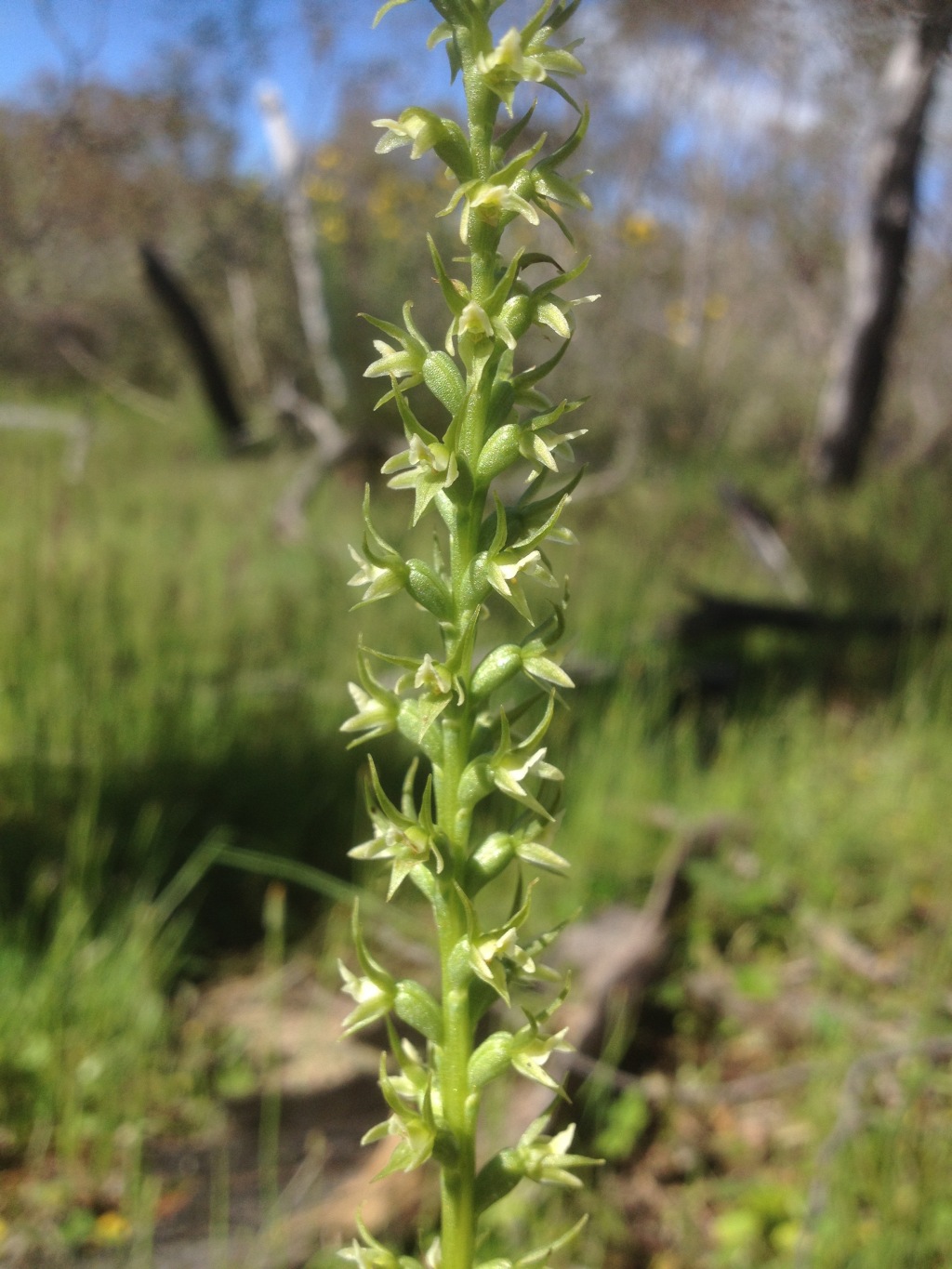Prasophyllum lindleyanum
Rchb.f.Flowering stem slender, 10–35 cm high. Leaf-blade to 30 cm long, 3–5 mm diam. at base, apex lax. Flowers 10–20, greenish, fragrant, in a loose raceme to 18 cm long; ovary obovoid, to 3 mm long, inclined at c. 30 deg. to the rachis; sepals green, 5–7 mm long, dorsal sepal at 90 deg. to ovary, ovate-lanceolate, lateral sepals free, erect, divergent; petals 4–5 mm long, narrow-oblong. Labellum sessile, narrowly trullate, 5–6 mm long, sigmoid in profile, lamina greenish or pale pink, papillate, margins crinkled, slightly incurved, callus green, narrow, extending beyond second bend, papillate. Column appendages pale, lanceolate, c. 2 mm long. Flowers Sep.–Jan.
Wim, VVP, GipP, OtP, Gold, CVU, GGr, DunT, NIS, EGL, WPro, HSF, HNF, OtR, VAlp. Also ?NSW, Tas. Occurs in more fertile soils of woodland or scrubby heath, but now localized and uncommon. Flowers Sep.-Jan. Widespread, but generally uncommon in near-coastal scrub, dry woodlands further inland and sub-alpine herbfield.
Flowering is generally enhanced by fire, but some populations flower well without fire.
Prasophyllum lindleyanum is very similar to the South Australian P. pallidum, which reproduces without fertilization, has a larger ovary, no pink tints, a broader labellum, which is not sigmoid, and often with a conical spur at the base.
Bates, R.J. (1994). Prasophyllum. In: Walsh, N.G.; Entwisle, T.J., Flora of Victoria Vol. 2, Ferns and Allied Plants, Conifers and Monocotyledons, pp. 869–886. Inkata Press, Melbourne.
 Spinning
Spinning
